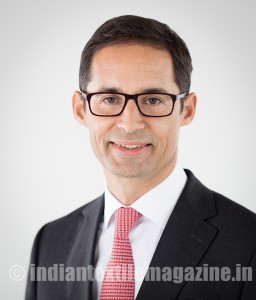The Lenzing Group has announced its new business strategy for the coming years entitled ‘sCore TEN’. Accordingly, Lenzing’s main priorities are strengthening the company’s core business, intensifying co-operation with customers along the value chain, increasing the share of specialty fibers to 50 per cent of total revenue by 2020, expanding its quality and technological leadership for man-made cellulose fibers and opening up new attractive business areas.

“Our objective is to safeguard and expand the group’s leadership role in the dynamic growth market for man-made cellulose fibers”, says Lenzing’s Chief Executive Officer Stefan Doboczky. “To achieve this, we will focus more intensively on the most attractive segments in the specialty fiber business. Lenzing will put value before volume in the future. We aim at achieving volume growth.”
Lenzing expects annual demand for man-made cellulose fibers to increase by five-six per cent until 2020, which is nearly twice as fast as the global fiber market. The primary factors driving demand are the continuing growth of the world’s population and rising prosperity in the emerging markets. Forecasts call for a rise in per capita textile consumption in the emerging markets by all in all 50 per cent in the period 2010 to 2020. In developed countries the nonwovens industry, an important sales market for Lenzing, will profit from the growing demand for hygiene products. The nonwovens segment is expected to expand twice as fast as the textile market.
The new Lenzing strategy entitled ‘sCore TEN’ was designed to take account of the major megatrends. On the one hand, the name stands for a resolute performance orientation (scoring) and for a strengthening of Lenzing‘s core business operations (core) and, on the other hand, the new strategy reflects the objective of generating sustainable growth with specialty fibers such as Lenzing Modal or TENCEL (TEN). Five strategic measures comprise the cornerstones of sCore TEN:
Strengthening the core: The target is to increase Lenzing’s pulp position through backward integration by increasing the group’s own pulp production volumes and/or expanding strategic co-operations. Lenzing will strive to expand upon its quality and technology leadership. A program aimed at strengthening commercial processes is designed to deliver a positive EBITDA contribution totaling EUR 50 million by 2017. The reorganization of the technical service units will be concluded in 2016.
Customer intimacy: Lenzing plans to establish regional competence centers for product innovations and will move greater decision-making powers to the regions. These steps will bring Lenzing closer to its customers.
Specialization: Lenzing aims at generating 50 per cent of total revenue from the business with eco-friendly specialty fibers such as TENCEL, Lenzing Modal and viscose fiber specialties by 2020. It will further increase production capacities for TENCEL depending on the market requirements.
Forward solutions: Lenzing will selectively enhance its R&D activities along the value chain by new game-changing technologies.
New business areas: Based on its core competencies, Lenzing will open up new business areas.
In the light of the increasing demand for textile fibers one of the major future challenges for the fiber industry is sustainability. Lenzing boasts a major competitive advantage in this respect. Its cellulose fibers originate in sustainably managed forests, are produced in an environmentally-friendly manner and are biodegradable. In particular, TENCEL fibers are unrivalled on the marketplace when it comes to sustainability. Taking all parameters into account, TENCEL is up to 17 times more environmentally compatible than other fibers. Lenzing fibers are outstanding as blending partners for cotton and polyester, and improve their sustainability.
“Compared to the previous year, we want to continually increase EBITDA by 10% annually and aim to increase the return on capital employed (ROCE) to more than 10% by 2020. At the same time, our objective is to keep net financial debt at a level which is less than 2.5 times EBITDA”, Doboczky explains in reference to the financial performance targets of sCore TEN.
Lenzing plans to finance all necessary investments required to implement this strategy from its own capital resources and simultaneously strive for a dividend pay-out of up to 50 per cent of the group net profit.
